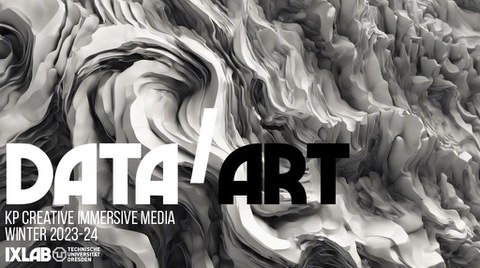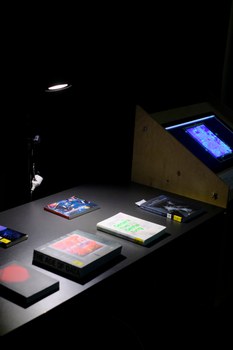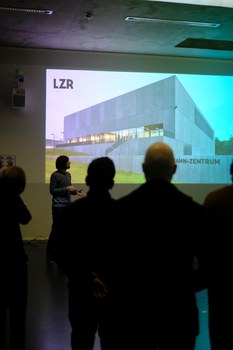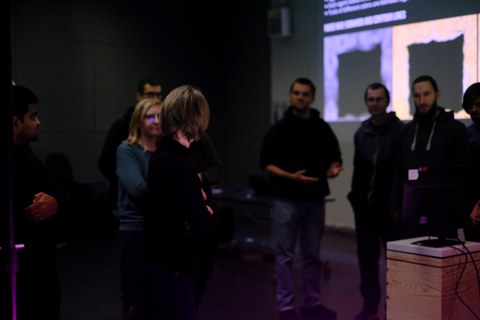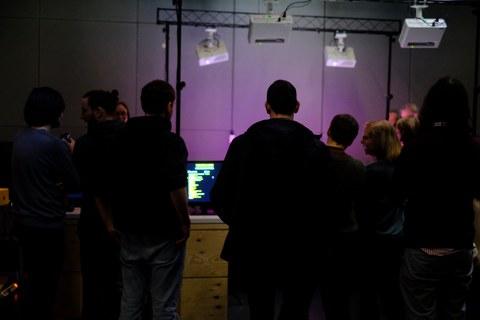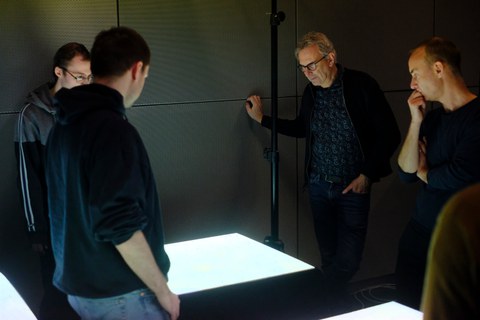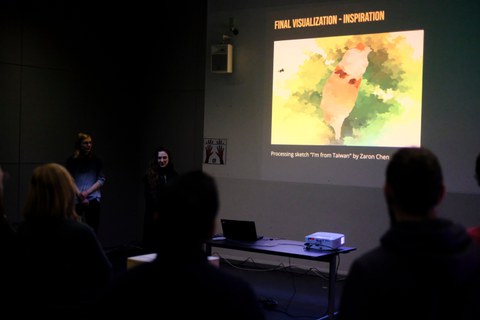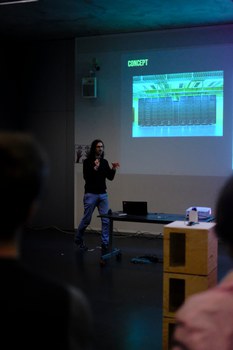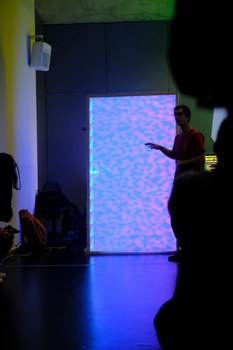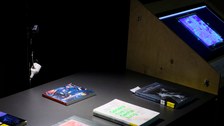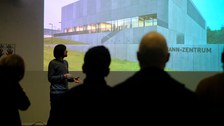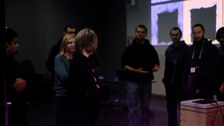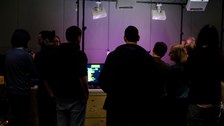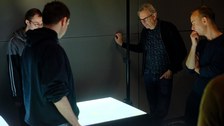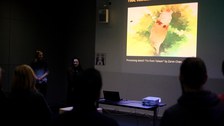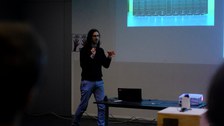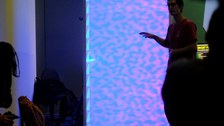Data/Art
The supercomputer cluster at TU Dresden's ZIH is used for data analyses, machine learning and processing large data sets. All these processes take place unnoticed in a huge, windowless concrete cube.
In the complex practical course, students researched ways of visualising the processes and calculations that take place in the supercomputer. Inspired by "data artists" such as Ryoji Ikeda, Nathalie Miebach and Refik Anadol, they designed and developed visualisations that can explain, inspire or provoke. The students transform abstract data into spatial or tangible forms and structures.
Results
The Long Game
by Jonathan Pitzschel and Michael Spindler
In The Long Game, individual processes in the computing clusters form the scientific topography. The installation consists of four tables with an ao-projection, whereby each table is assigned to a cluster. Each process corresponds to an agent visualised as a point, which moves across a square base area according to fixed rules. All agents leave a trace, which varies in size depending on the memory allocation and is coloured differently depending on the research field.
Circuit Flowfields
by Peter Hilgenfeld and Robert Ludwig
Circuit Flowfields visualises the processes of a computing cluster as a projection in the format of a server cabinet. The installation shows the relationship between the number and size of processes in different research fields within a cluster. You get an insight into what is being calculated the most at any given time and what is only being calculated a little.
Garden of Death
by Muecella Cetinkaya and Julian Hildebrandt
Garden of Death depicts the life and death of the processes. The active processes can be actively explored by the viewer. This is done with the help of a flexible rope that can be pulled up and down, allowing the processes to be explored. Recently completed processes are displayed in the background and show parts of the image hidden in the background.
Clusters of NYX
by Konrad Raue, Domenic Schubert and Jenny Pretzsch
Clusters of NYX understands each computing cluster as a solar system and visualises its processes as asteroids that burn up in the sun at the end of their lifetime. Realised as a projection on a rotating table, it is possible to switch between the different clusters by rotating the table.
Supervision
Brian Eschrich
Daniel Zeidler
Kelsang Mende
Jun.Prof. Matthew McGinity

